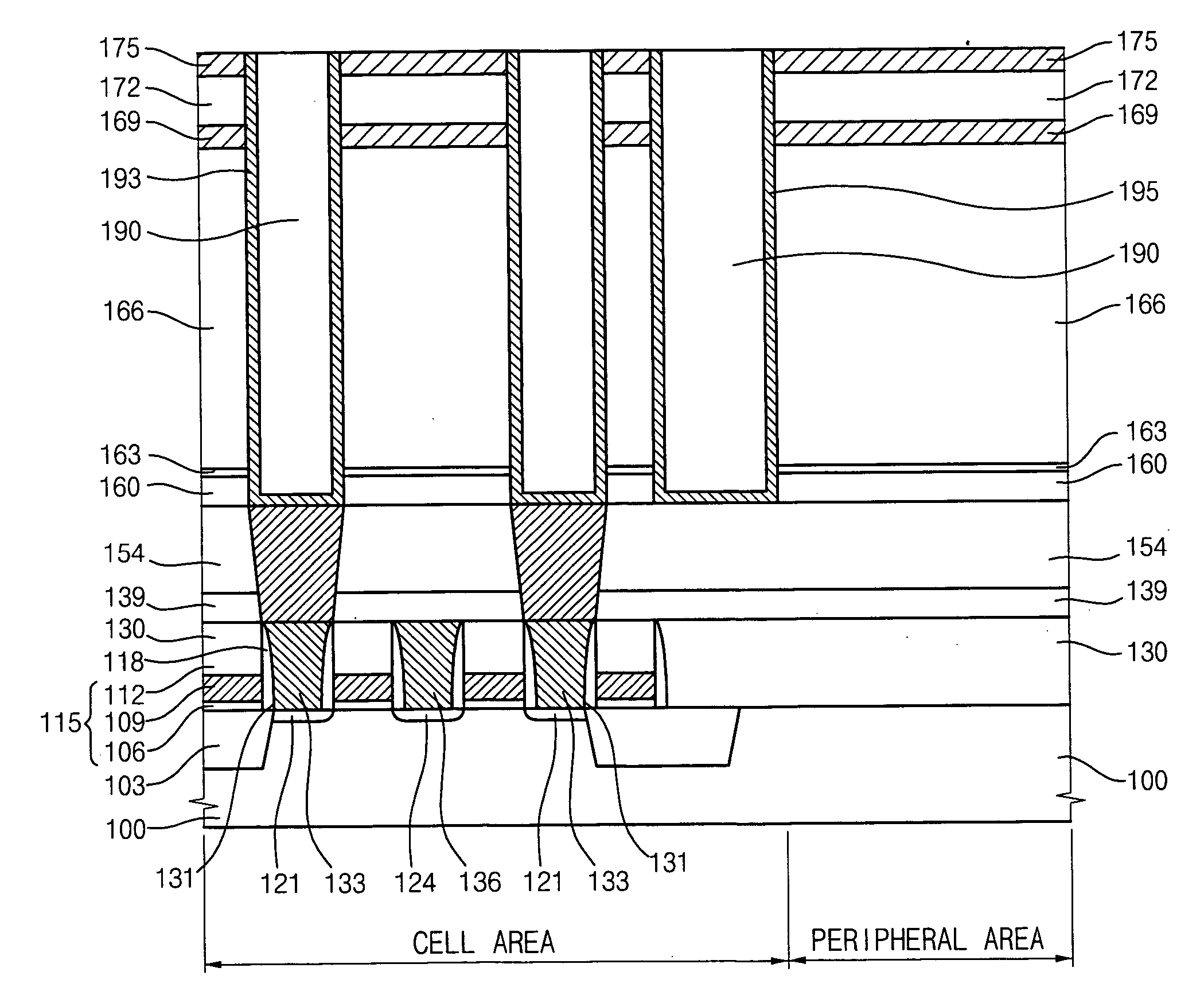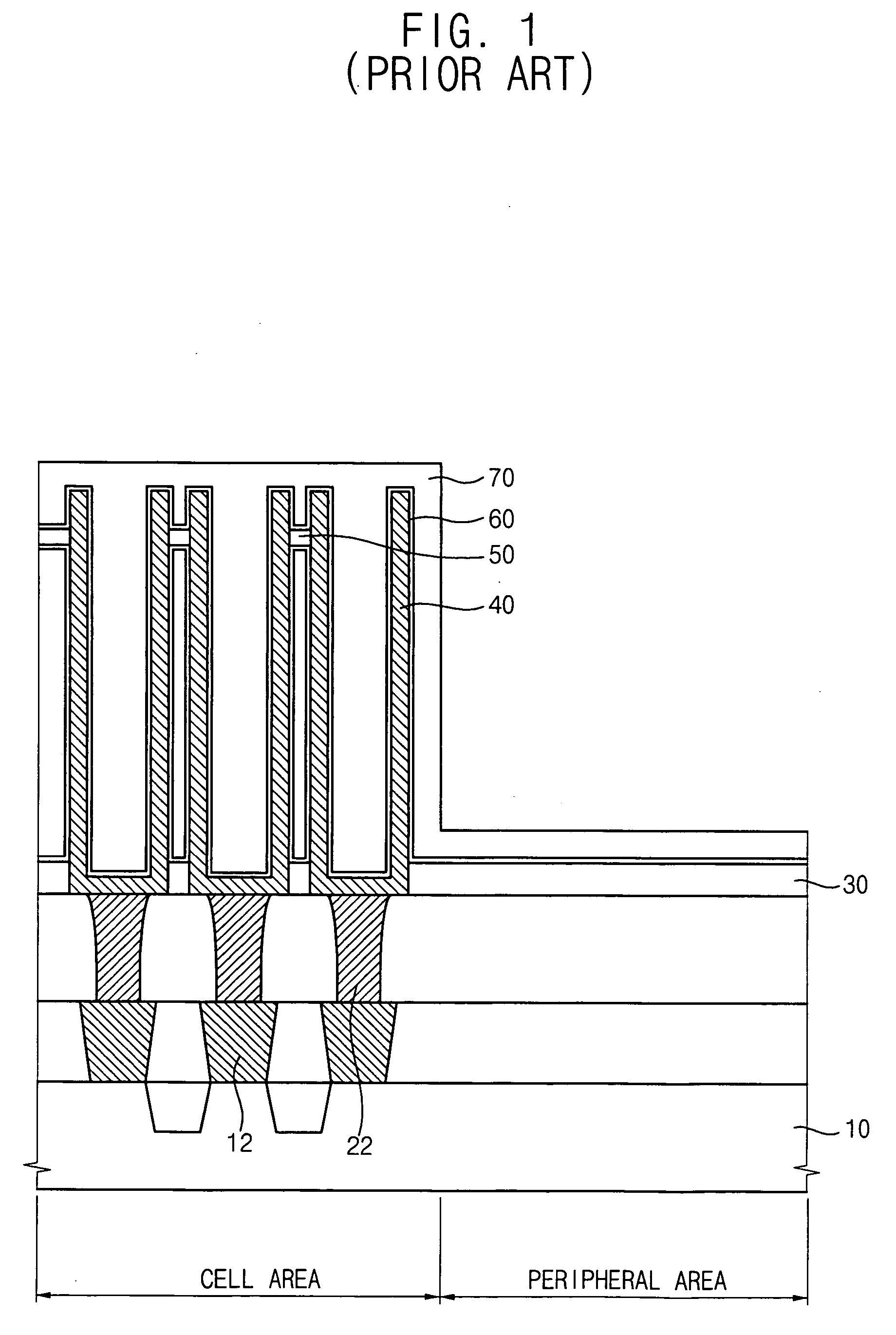Method of manufacturing a semiconductor device
a manufacturing method and semiconductor technology, applied in semiconductor devices, capacitors, electrical devices, etc., can solve the problems of node electrode collapse, node electrode collapse, and inability to improve the structure of storage node electrodes, etc., to reduce the step between the cell area and the peripheral area
- Summary
- Abstract
- Description
- Claims
- Application Information
AI Technical Summary
Benefits of technology
Problems solved by technology
Method used
Image
Examples
first modified embodiment
[0099]FIG. 29 is a plan view illustrating the second opening shown in FIG. 9.
[0100] Although the above exemplary embodiment describes the second opening 185 formed around the cell region and surrounding the cell region with a uniform width shown in FIG. 9, the second opening can be modified so that its width is varied in accordance with the metal contact plug 217. In the present embodiment, the second opening is modified so that a corner portion thereof has a sufficient width to hold the metal contact plug 217 and a remaining portion, except the corner portion, has a relatively small width, as shown in FIG. 29.
second modified embodiment
[0101]FIG. 30 is a plan view illustrating the second opening shown in FIG. 9, and FIG. 31 is a plan view illustrating another modified embodiment of the first embodiment of the second opening shown in FIG. 29.
[0102] Referring to FIG. 30, the second opening 185 shown in FIG. 9 is otherwise modified so that a plurality of protruding portions 186 is formed in the second opening 185. The protruding portion 186 is vertically protruded from a bottom surface of the second opening 185. In a similar way, the first modified embodiment of the second opening 185a is re-modified so that a plurality of protruding portions 186a is formed in the corner portion of the first modified embodiment of the second opening 185a. The protruding portion 186a is vertically protruded from a bottom surface of the first modified embodiment of the second opening 185a. The protruding portion 186 and 186a facilitates a filling of the second opening 185 and the first modified embodiment of the second opening 185a wit...
PUM
 Login to View More
Login to View More Abstract
Description
Claims
Application Information
 Login to View More
Login to View More - R&D
- Intellectual Property
- Life Sciences
- Materials
- Tech Scout
- Unparalleled Data Quality
- Higher Quality Content
- 60% Fewer Hallucinations
Browse by: Latest US Patents, China's latest patents, Technical Efficacy Thesaurus, Application Domain, Technology Topic, Popular Technical Reports.
© 2025 PatSnap. All rights reserved.Legal|Privacy policy|Modern Slavery Act Transparency Statement|Sitemap|About US| Contact US: help@patsnap.com



